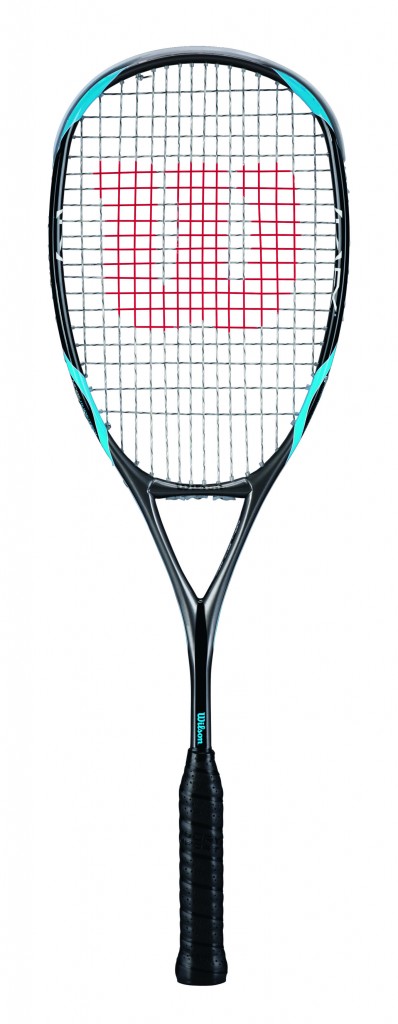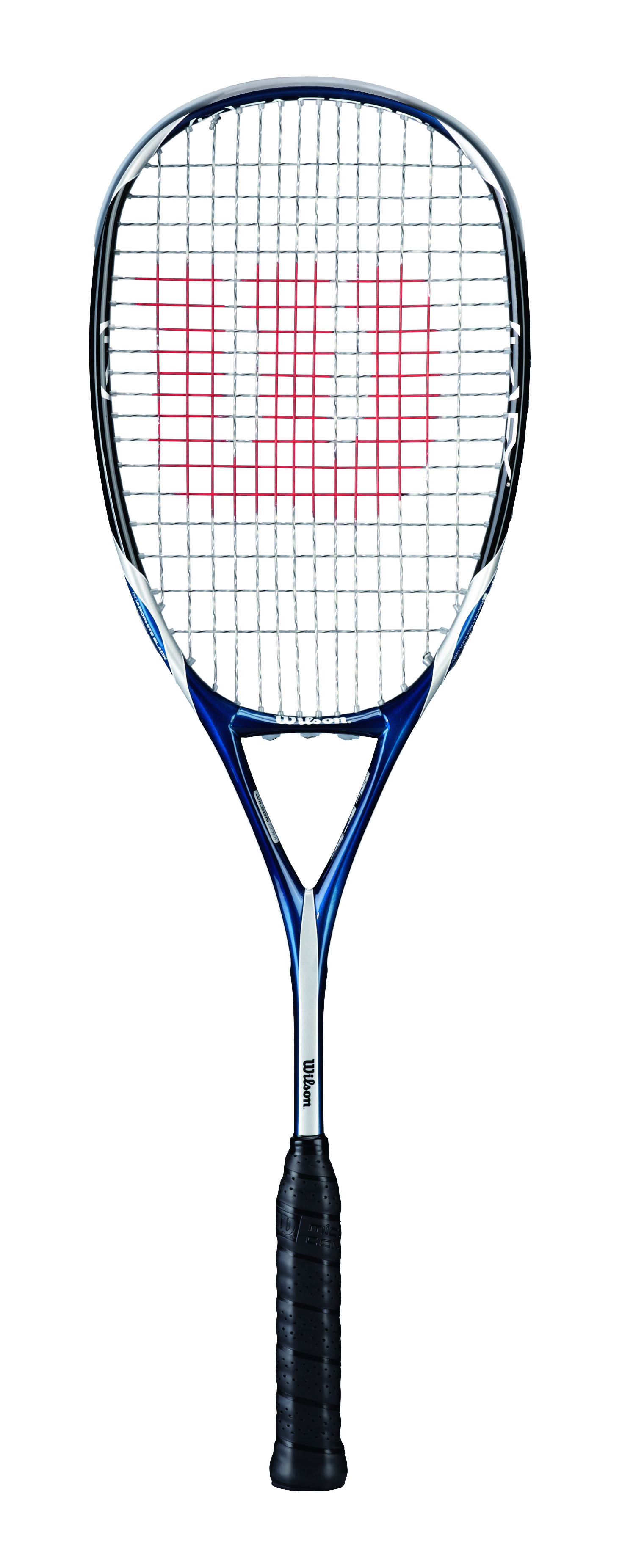

Wilson’s new line of racquets features some subtle changes along with the introduction of the “K” factor into their carbon frames. But what exactly is the “K” factor anyway? At the risk of getting too scientific, here’s the explanation: the previous nCode racquets utilized “nanotechnology” to inject a filler material between the spaces created by graphite molecules in order to produce a more stable material. In this latest iteration, the “K” factor is what Wilson calls Karophite Black being used to connect—or fuse—the filler material (SiO2) to the graphite permanently. In other words, making the frame material even more stable.
Okay, so what does that mean to squash players? Wilson is introducing the (K)Sting and the (K)Sonix. Both are head heavy with strung weights of 173g (Sting) and 170g (Sonix)—with balance points at 12.75” and 12.5” from the tip of the heads respectively.
While the “K” factor enhances the torsional (think of the twisting of a screwdriver) stability of these racquets, there is noticeable flex in the throat area that absorbs shock and dampens the impact of the ball on the strings. For those looking for better control, the advantage of this flex is that the ball stays on the racquet slightly longer thereby enhancing control. It also makes for a slightly “whippy” feel to the racquets when driving the ball hard.
While the Sonix is marginally lighter than the Sting, the power feels significantly greater though in part because the balance point is further from the handle but the overall weight is lower thereby allowing for a faster (more powerful) swing.
Both racquets feature Wilson’s typically small (diameter) handles which enhances their maneuverability making for quicker reflexes. The smaller handles increase wrist movement which is a positive for players who impart a lot of wrist-snap in their strokes.
Gone from both the Sting and the Sonix are the PowerHoles™ that have been a mainstay for years in Wilson racquets. But given the flex of the throat, the need for increased travel area for the string bed is decreased.
Bottom line is that the Sting and Sonix both offer head heavy options with small handles and some flex in the frame and good control. Their balance points are marginally different, but noticeable, and will require some use by players to gauge the subtleties.
Visit www.wilson.com/squash for more info.





